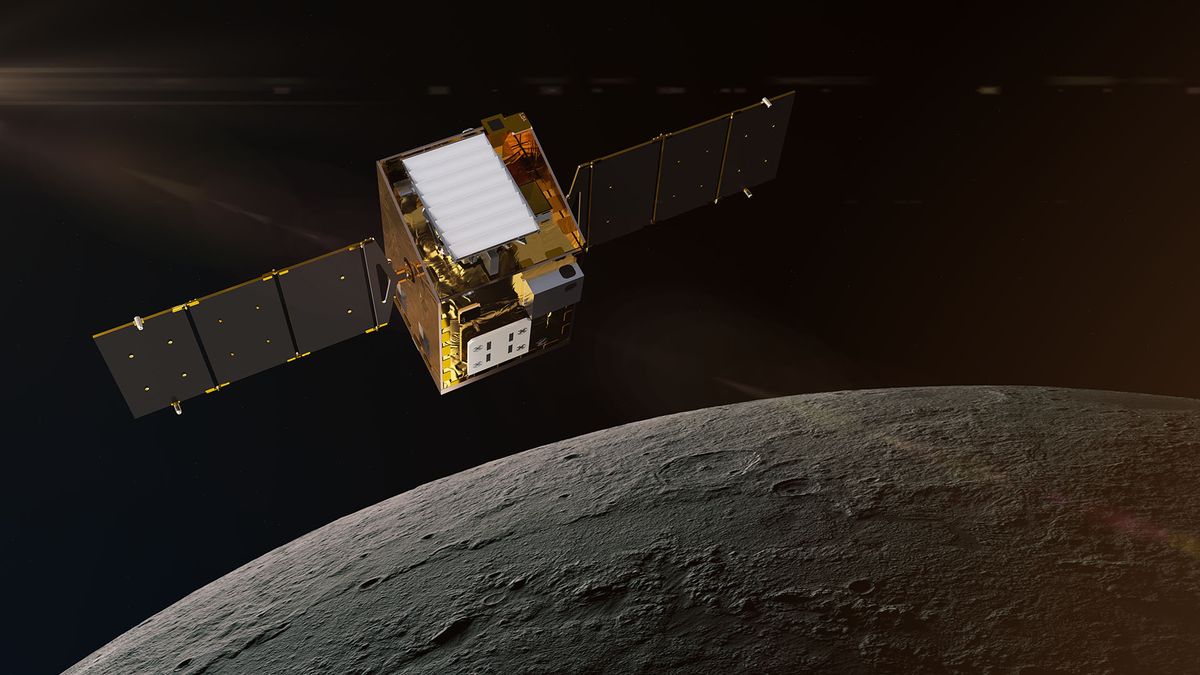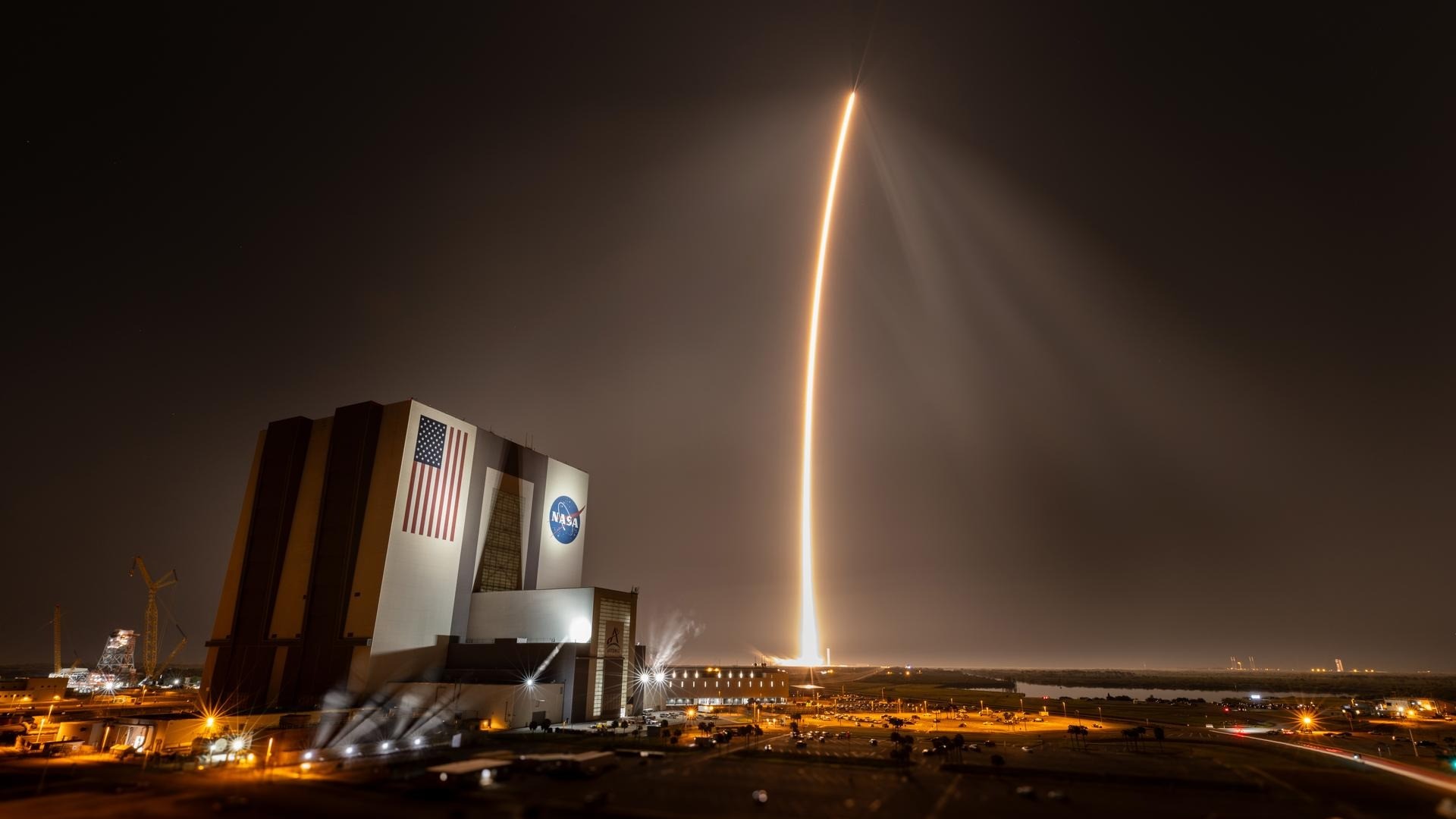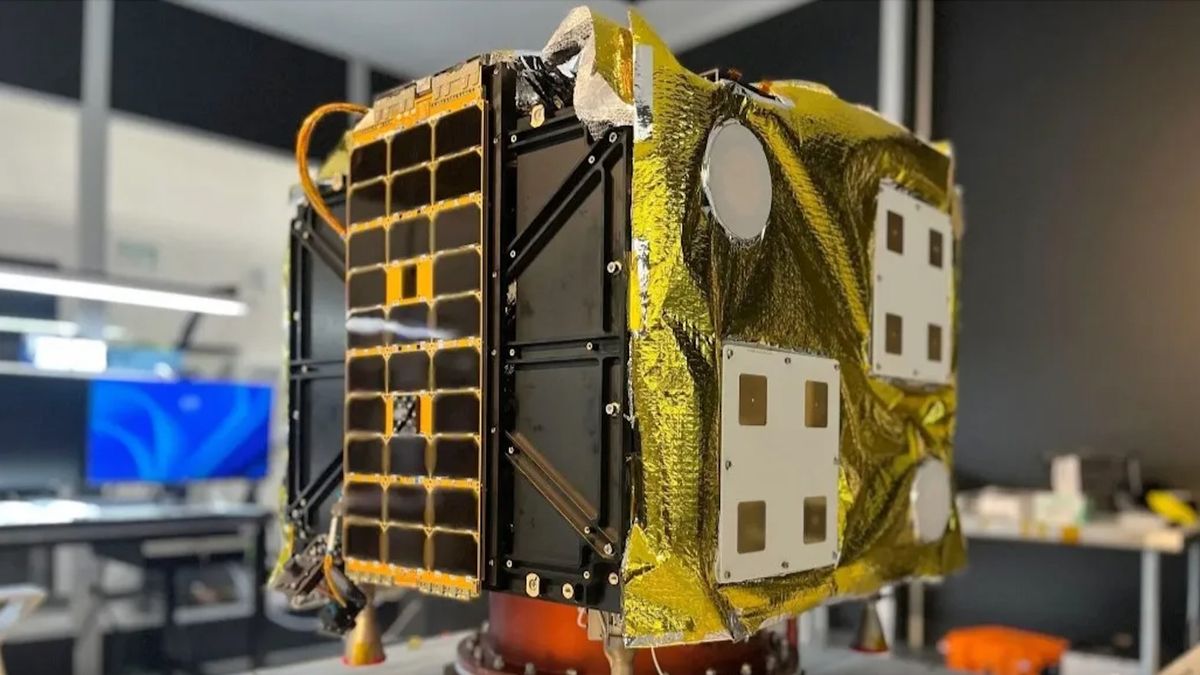
The Lunar Trailblazer mission from NASA may be facing challenges.
The Lunar Trailblazer was successfully launched on February 26 aboard a SpaceX Falcon 9 rocket, alongside Intuitive Machines’ Athena lunar lander as part of the IM-2 mission. This compact probe, measuring 11.5 feet (3.5 meters) and weighing 440 pounds (200 kilograms), is tasked with orbiting closely to the lunar surface to investigate and chart potential water reserves in regions that remain in permanent shadow on the moon. While it launched without a hitch, subsequent reports suggest difficulties for the spacecraft, as mentioned in a recent NASA update.
After its launch, Lunar Trailblazer activated and began sending data. However, around 12 hours post-launch, the mission team detected power problems and communication was lost. Fortunately, operators from Caltech and the Jet Propulsion Laboratory reestablished contact shortly thereafter. They are currently collaborating with NASA ground stations to regain full telemetry and control, enabling them to better understand the issues with the power system and explore potential solutions, according to NASA’s update.
Developed by Lockheed Martin, Lunar Trailblazer is equipped with two advanced instruments for searching for lunar water. The Lunar Thermal Mapper (LTM) employs infrared light to map the moon’s surface temperature, aiding in the analysis of mineral distributions.
Additionally, the High-resolution Volatiles and Minerals Moon Mapper (HVM3), created by NASA’s Jet Propulsion Laboratory, is designed to assess sunlight reflection off the moon’s surface. This information will assist in identifying the chemical signatures associated with any water present on the lunar landscape.
Locating water on the moon remains a key objective for NASA as part of its Artemis program aimed at establishing a sustainable human presence on the lunar surface. Previous lunar mapping missions have provided evidence indicating the presence of water in regions that are always in shadow, particularly near the lunar south pole, which is where NASA plans to land astronauts during the Artemis 3 mission.

While it remains uncertain how significant the water deposits may be, researchers are hopeful that these resources could support human activities on the moon or potentially serve in the production of vital resources like rocket fuel.
Another probe launched at the same time as the Lunar Trailblazer is reportedly experiencing issues. The Odin probe, developed by the private firm Astroforge for its aim to mine asteroids for valuable materials, also launched on the same rocket and is intended to study asteroid 2022 OB5 in preparation for a subsequent landing mission.
As of now, Odin has not yet established communication with its team, leaving mission controllers uncertain about its operational status, as stated by Astroforge CEO Matthew Gialich in a recent post on X dated February 28.









